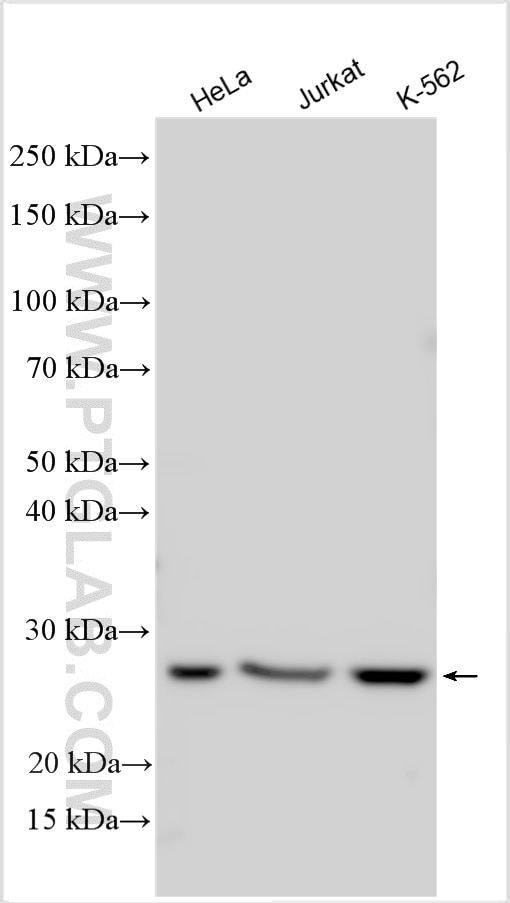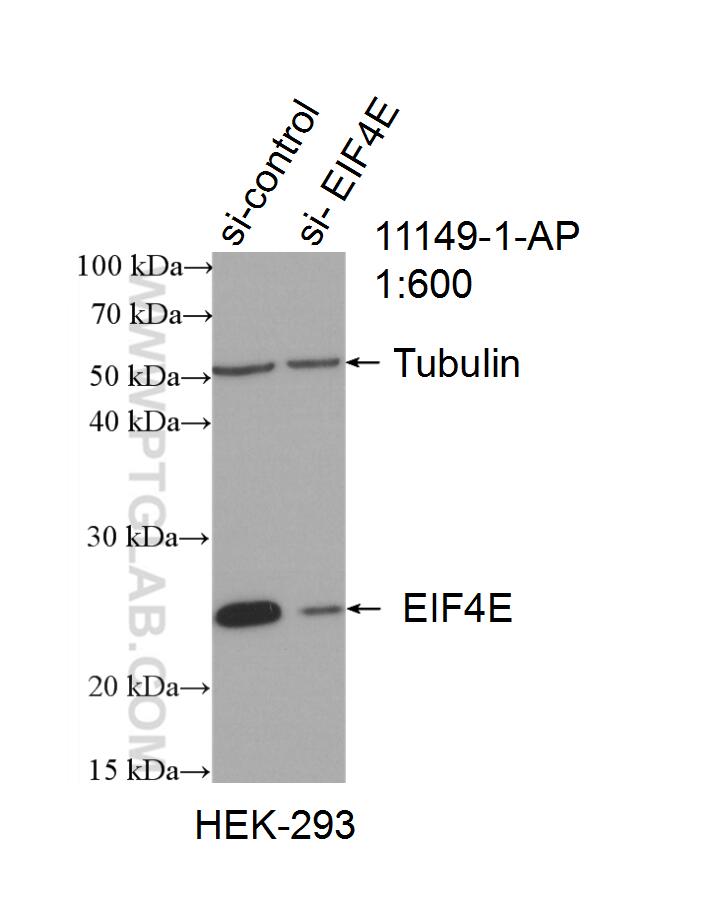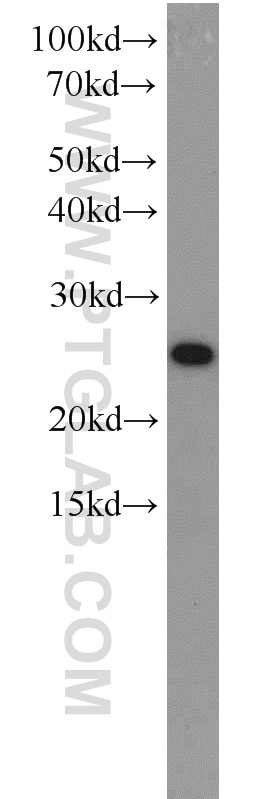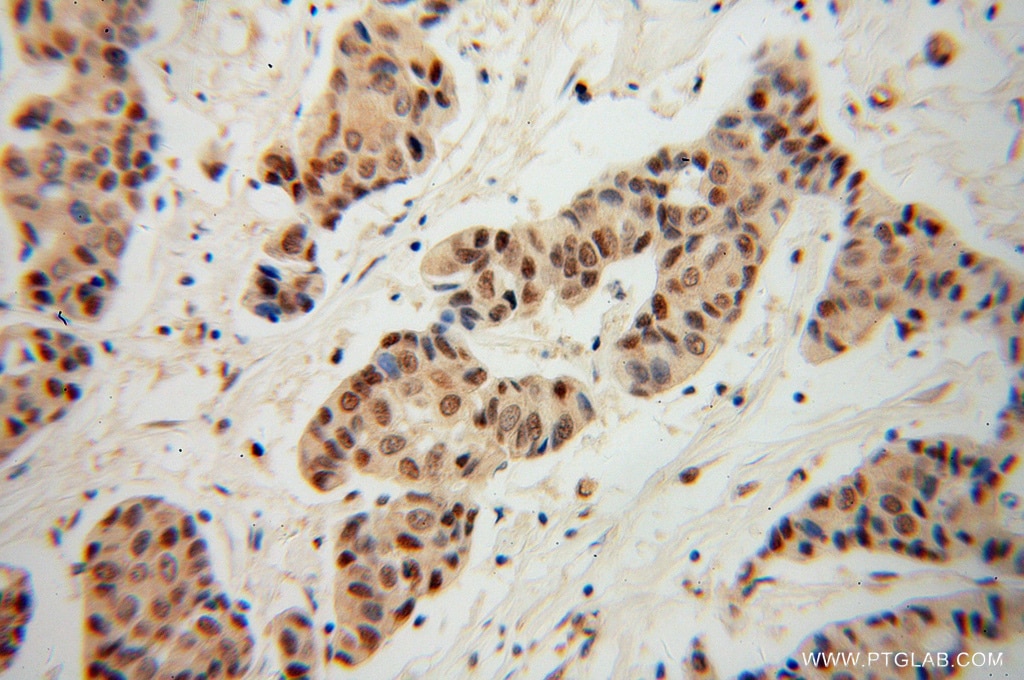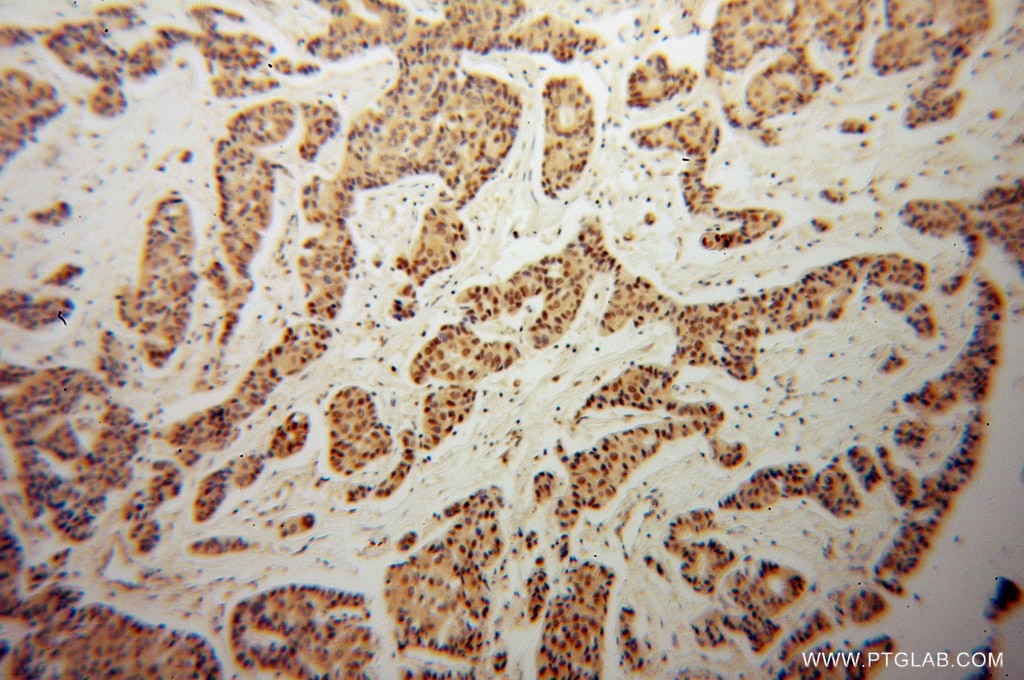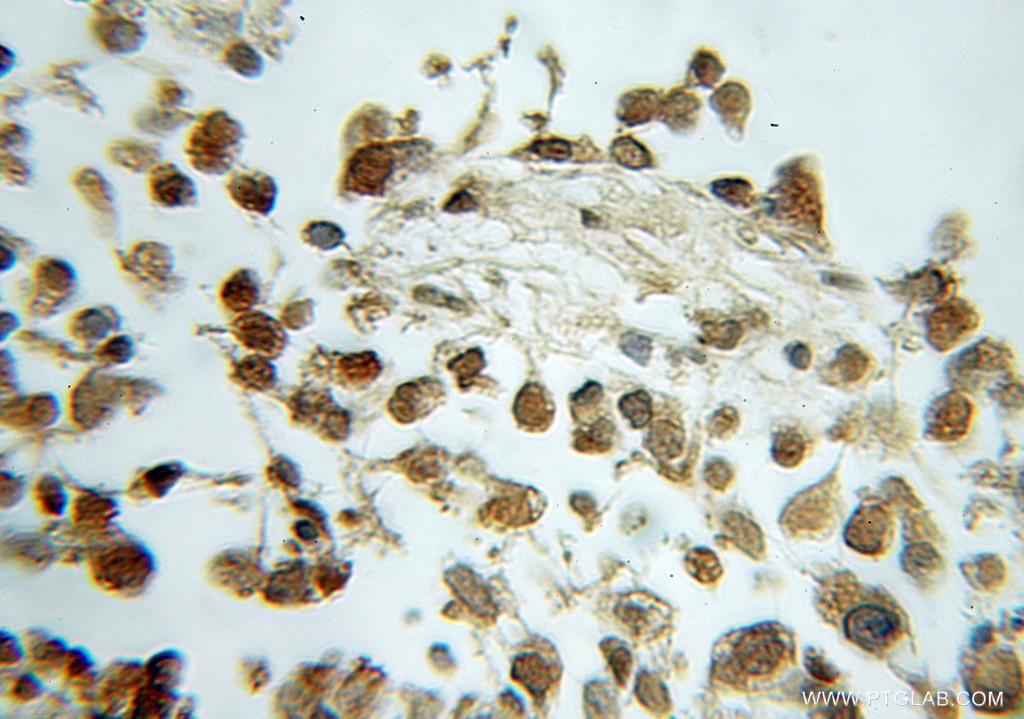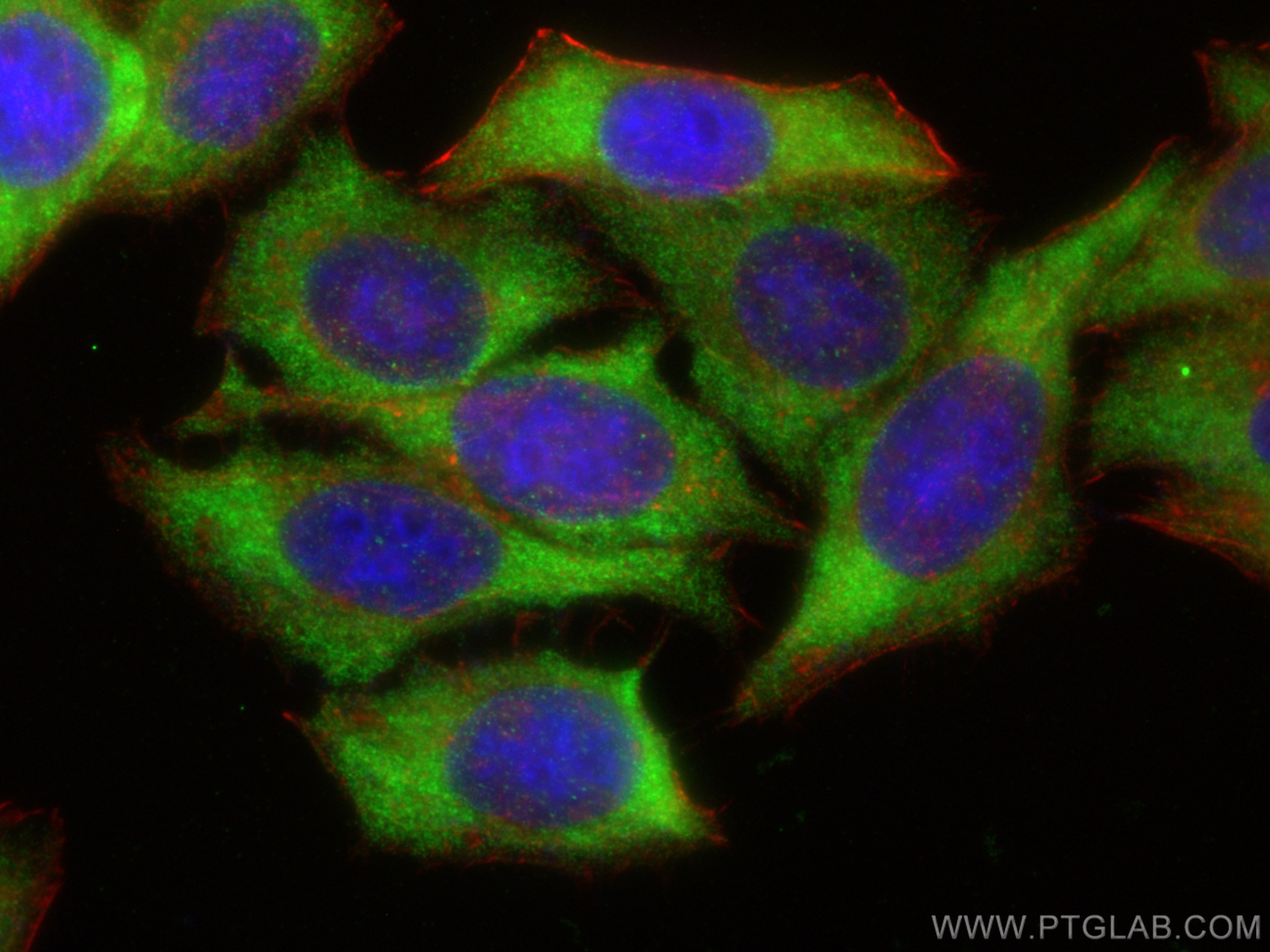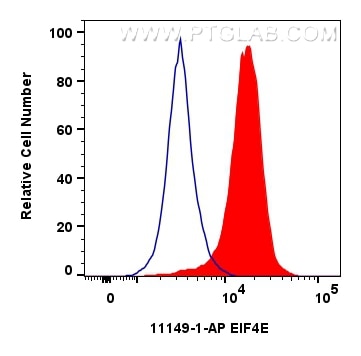Tested Applications
| Positive WB detected in | HeLa cells, HEK-293 cells, Jurkat cells, K-562 cells |
| Positive IHC detected in | human breast cancer tissue, human gliomas tissue Note: suggested antigen retrieval with TE buffer pH 9.0; (*) Alternatively, antigen retrieval may be performed with citrate buffer pH 6.0 |
| Positive IF/ICC detected in | HepG2 cells |
| Positive FC (Intra) detected in | HeLa cells |
Recommended dilution
| Application | Dilution |
|---|---|
| Western Blot (WB) | WB : 1:1000-1:4000 |
| Immunohistochemistry (IHC) | IHC : 1:20-1:200 |
| Immunofluorescence (IF)/ICC | IF/ICC : 1:200-1:800 |
| Flow Cytometry (FC) (INTRA) | FC (INTRA) : 0.40 ug per 10^6 cells in a 100 µl suspension |
| It is recommended that this reagent should be titrated in each testing system to obtain optimal results. | |
| Sample-dependent, Check data in validation data gallery. | |
Published Applications
| WB | See 24 publications below |
| IHC | See 3 publications below |
| IF | See 1 publications below |
Product Information
11149-1-AP targets EIF4E in WB, IHC, IF/ICC, FC (Intra), ELISA applications and shows reactivity with human samples.
| Tested Reactivity | human |
| Cited Reactivity | human, mouse |
| Host / Isotype | Rabbit / IgG |
| Class | Polyclonal |
| Type | Antibody |
| Immunogen |
CatNo: Ag1626 Product name: Recombinant human EIF4E protein Source: e coli.-derived, PGEX-4T Tag: GST Domain: 1-217 aa of BC012611 Sequence: MATVEPETTPTPNPPTTEEEKTESNQEVANPEHYIKHPLQNRWALWFFKNDKSKTWQANLRLISKFDTVEDFWALYNHIQLSSNLMPGCDYSLFKDGIEPMWEDEKNKRGGRWLITLNKQQRRSDLNRFWLETLLCLIGESFDDYSDDVCGAVVNVRAKGDKIAIWTTECENREAVTHIGRVYKERLGLPPKIVIGYQSHADTATKSGSTTKNRFVV Predict reactive species |
| Full Name | eukaryotic translation initiation factor 4E |
| Calculated Molecular Weight | 29 kDa |
| Observed Molecular Weight | 26-29 kDa |
| GenBank Accession Number | BC012611 |
| Gene Symbol | EIF4E |
| Gene ID (NCBI) | 1977 |
| RRID | AB_2097686 |
| Conjugate | Unconjugated |
| Form | Liquid |
| Purification Method | Antigen affinity purification |
| UNIPROT ID | P06730 |
| Storage Buffer | PBS with 0.02% sodium azide and 50% glycerol, pH 7.3. |
| Storage Conditions | Store at -20°C. Stable for one year after shipment. Aliquoting is unnecessary for -20oC storage. 20ul sizes contain 0.1% BSA. |
Background Information
Eukaryotic translation initiation factor 4E, also known as eIF4E, is a protein that in humans is encoded by the EIF4E gene. eIF4E is the mRNA cap-binding protein, known as a general initiation factor allowing for mRNA-ribosome interaction and cap-dependent translation in eukaryotic cells. eIF4E is a polypeptide that exists as both a free form and as part of the eIF4F pre-initiation complex. Regulation of eIF4E may be achieved via three distinct mechanisms: transcription, phosphorylation, and inhibitory proteins. This is a rabbit polyclonal antibody raised against the full-length human EIF4E.
Protocols
| Product Specific Protocols | |
|---|---|
| FC protocol for EIF4E antibody 11149-1-AP | Download protocol |
| IF protocol for EIF4E antibody 11149-1-AP | Download protocol |
| IHC protocol for EIF4E antibody 11149-1-AP | Download protocol |
| WB protocol for EIF4E antibody 11149-1-AP | Download protocol |
| Standard Protocols | |
|---|---|
| Click here to view our Standard Protocols |
Publications
| Species | Application | Title |
|---|---|---|
Cancer Res HBXIP and LSD1 Scaffolded by lncRNA Hotair Mediate Transcriptional Activation by c-Myc. | ||
Nucleic Acids Res SUMOylation of the m6A-RNA methyltransferase METTL3 modulates its function. | ||
Mol Ther RNA m6A methylation regulates the dissemination of cancer cells via modulating expression and membrane localization of β-catenin. | ||
Theranostics KDM6A promotes imatinib resistance through YY1-mediated transcriptional upregulation of TRKA independently of its demethylase activity in chronic myelogenous leukemia. | ||
Cell Death Dis Multifunctional viral protein γ34.5 manipulates nucleolar protein NOP53 for optimal viral replication of HSV-1. | ||
ACS Chem Neurosci Quercitrin Rapidly Alleviated Depression-like Behaviors in Lipopolysaccharide-Treated Mice: The Involvement of PI3K/AKT/NF-κB Signaling Suppression and CREB/BDNF Signaling Restoration in the Hippocampus |

